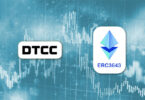Today at R3’s annual Cordacon, one of the presentations was titled “Corda Coin – a Permissionless Cryptocurrency on Corda”. But before you get too excited, R3 is not planning an ICO. While the talk’s title is a little tongue in cheek, there’s some practical use for it.
When people talk about Corda, they often like to point out that it’s not technically a blockchain, though it’s undoubtedly blockchain-inspired. In fact, it’s not a blockchain by design. Corda focuses on financial applications, hence enables distributed applications in a permissioned environment that banks are comfortable with.
I didn’t manage to attend the presentation, but I caught up with the speaker, R3’s Roger Willis, afterwards. He explained that there is potential for a permissionless, public blockchain to run on top of Corda. “Corda is a platform for building distributed applications where a blockchain is one of those applications,” said Willis. And, at the talk, he demonstrated how a blockchain could be built as an app or Cordapp.
Corda Coin is currently a research project. It’s at the concept stage, and Willis plans to write and publish a design document. The hope is that someone in the community will run with it because he doesn’t have time to build it.
This wasn’t the only research project at today’s conference. Former Lead engineer Mike Hearn has moved into a full-time role on another project called Conclave. Willis explained that together with CTO Richard Gendal Brown the trio are exploring “what’s the art of the possible? What are we going to be doing in one year’s, two year’s time? The CordaCoin project is part of that. How can you mix private and public ledgers together?”
For enterprises, public blockchains present numerous challenges. Those include scalability, performance, and governance. Nonetheless many believe that public blockchains could be the end game and private blockchains are an interim step. Others see a role for public blockchains in certain scenarios.
To date, the mix has tended to involve private blockchains running as sidechains on Ethereum. And multiple firms such as Santander and Societe Generale have experimented with bond issuance on Ethereum. Ironically these are both banks, precisely the audience that Corda was initially built for.
As the range of applications expands, the need to integrate Corda with public blockchains will arise.
Consortia that develop Corda applications live on the Corda Network, which means they can more easily interoperate with each other. So an insurance network could interface with a trade finance network to provide insurance.
So how does permissionless blockchain fit into the Corda Network? “It could be an application on top of a union of private ledgers,” said Willis.






